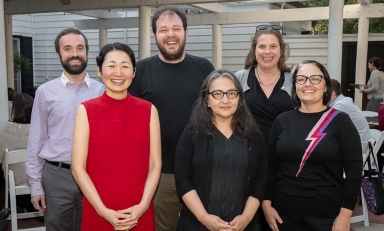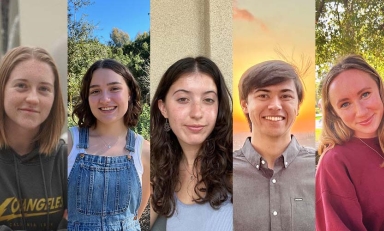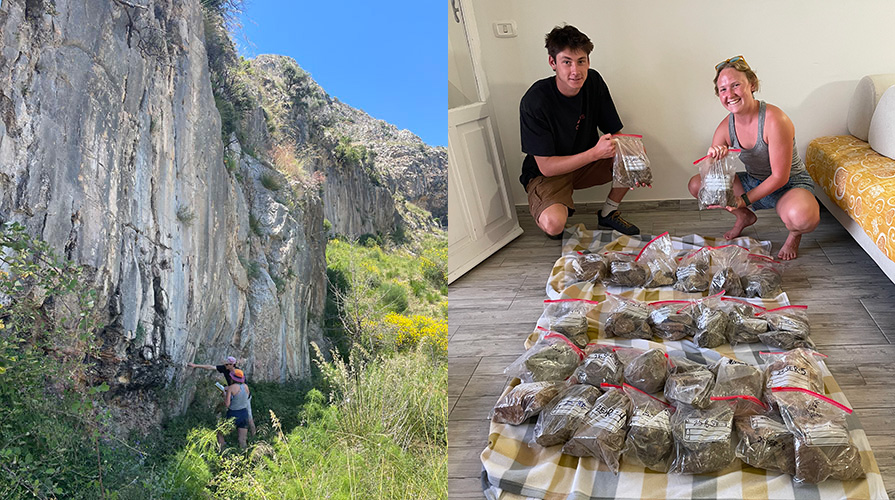
Two geology majors traveled with their professor to southern Italy to study tectonic plate movements through mineral dating. They enjoyed cappuccinos, volcano views, and fieldwork in the sun.
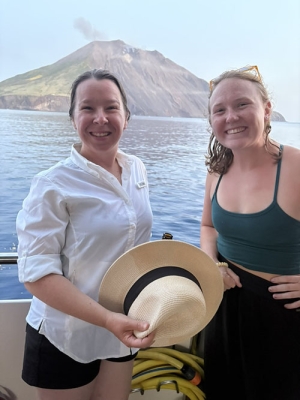
This month, geology majors Jasper Clarkson ’27 and Katie Patton ’27 ventured to Calabria, Italy, along with Assistant Professor of Geology Nikki Seymour. They were there to collect new mineral samples from an ancient divergent plate margin—where a continent breaks into two plates moving away from each other, creating rifts in the Earth that can lead to new oceans. Determining the age of three mineral samples (zircon, apatite, and rutile) helped them investigate how new plate margins form.
Calabria is an ancient example of a continent breaking into two pieces, Seymour says, which is happening right now in several other places around the world. “The difference is that we can’t get to the very deep rocks at the modern rifts. Calabria is an (admittedly picturesque) example of an ancient rift that has now been tilted and pushed up onto land by the ‘geologically recent’ reorganization of the Western Mediterranean. It’s a critical window to the deep Earth!”
Clarkson says he contacted Seymour over the winter break to ask about potential research opportunities, and he was able to jump right in to her directed research.
Seymour notes that the best way for Oxy students to get involved in research is to ask. “I am happy to take on students who are early in their geology career. We as professors can teach you the subject matter you need to know as long as you bring the enthusiasm—just like Katie and Jasper have in this project!”
Clarkson says he was interested in the work that Seymour is doing on plate tectonics. “This summer research allowed me to spend quality time learning one-on-one and in depth about a topic I am interested in. With the help of Dr. Seymour and Katie, I applied for Oxy’s Summer Research Program as well as a travel grant, which we both received.”
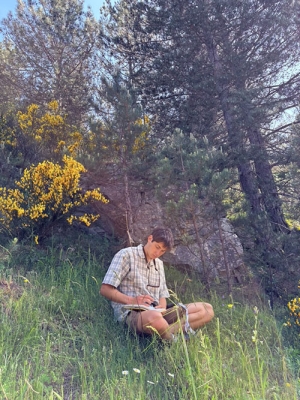
Patton says her journey started at the geology department’s Research Roundup, an event where professors give presentations about their ongoing research projects to the rest of campus.
“I was really excited about Dr. Seymour’s work, and I asked to join the project,” Patton says. “The following week I joined the lab and started learning all about divergent plate tectonics.”
Through this opportunity, the students were able to take a deeper dive into the research they are doing during the school year, focusing specifically on this work without having to balance it with other classes. The project could also become the foundation for future research, such as their senior comprehensive projects.
Clarkson says fieldwork alongside professors is one of the highlights of being a geology major at Occidental.
“In the field, we are able to work closely with Dr. Seymour, making sure we take good notes and understand everything that is going on,” Clarkson says. “Beyond that, we got to eat every meal together and drive 1,200 miles around southern Italy, listening to music and sharing stories, helping us all get closer outside of the lab setting.”
Clarkson says they got the opportunity to see the Italian countryside and interact with locals through the lens of geology.
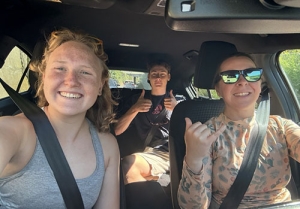
“The town that we stayed in on the southern coast was beautiful and a great place to relax after long days of fieldwork,” he says. “We took a tour of the islands that were about an hour long boat ride off the coast. One of these islands is an active volcano named Stromboli that we got to see erupt at night from the boat.”
Patton says one of her favorite aspects of the trip was being able to go to the outcrops that she and Clarkson selected by looking at satellite maps on Google Earth.
“It was a thrilling moment to hop out of the car and find the rocks we have been reading about,” Patton says. “Also, the cappuccinos and gelato were absolutely fantastic!”

